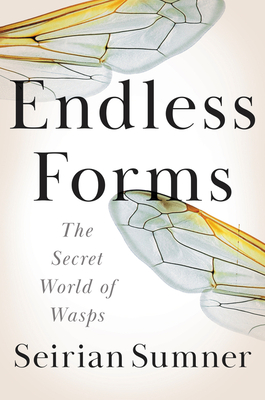Endless Forms: The Secret World of Wasps
Everyone worries about the collapse of bee populations. But what about wasps? Deemed the gangsters of the insect world, wasps are winged assassins with formidable stings. Conduits of Biblical punishment, provokers of fear and loathing, inspiration for horror movies: wasps are perhaps the most maligned insect on our planet.
But do wasps deserve this reputation?
Endless Forms opens our eyes to the highly complex and diverse world of wasps. Wasps are 100 million years older than bees; there are ten times more wasp species than there are bees. There are wasps that spend their entire lives sealed inside a fig; wasps that turn cockroaches into living zombies; wasps that live inside other wasps. There are wasps that build citadels that put our own societies to shame, marked by division of labor, rebellions and policing, monarchies, leadership contests, undertakers, police, negotiators, and social parasites. Wasps are nature's most misunderstood insect: as predators and pollinators, they keep the planet's ecological balance in check. Wasps are nature's pest controllers; a world without wasps would be just as ecologically devastating as losing the bees, or beetles, or butterflies.
Wasps are diverse and beautiful by every measure, and they are invaluable to planetary health, Professor Sumner reminds us; we'd do well to appreciate them as much as their cuter cousins, the bees.
Review: I received an uncorrected proof copy of this book from HarperCollins.
In this work of popular science non-fiction, the author explores the history, lives, and human relationship with wasps. Despite being one of the oldest insect forms, that gave rise to the much more popular bees and the very plentiful ants, wasps are still relatively poorly researched. In popular culture, wasps and their stings have earned a poor reputation with humans unlike, for example, the much more beloved honeybee. Yet Sumner argues that wasps have been unfairly maligned and presents the case that these creatures in all their seemingly endless varieties are fascinating and serve important roles as predators and pollinators that have rightly earned their place within the planet's ecosystems.
After reading this book, I have a new appreciation for a bug I truly knew little about beforehand. As the reader points out, unlike bees, little is ever shared about wasps in popular culture other than avoiding wasp infestations in homes and the horror of wasp stings. But Sumner reveals an endlessly varied bug with a storied history. Wasps have been around for one hundred millions years longer than bees and there are tens of thousands of wasp species, many of which are still to be discovered and documented. There are social and solitary wasps. Ones that feast on figs or on roaches. Some build elaborate pot structures while some have quite primitive dwellings. They can recognize human faces, learn over time, and have proven their ability to adapt over millennia. Without wasps serving as predators, we would be overrun with other types of bugs.
It was hard not to pick up on the infectious enthusiasm of the author for her subject. It is quickly apparent that Sumner is positively passionate about wasps. Researching and writing about wasps is not just a profession for her; it was clearly a lifelong interest and it shows in her writing. Even the language of the book is littered with evidence of her passion for wasps. During the early 2020 lockdown, she reports that she "spent an indecent amount of my time on the internet lusting over images over potter wasps" (109). When she gets to spend a whole day with other wasp enthusiasts she has to "pinch myself to check it was real" (132). I appreciated the enthusiasm that helped make even the topic of wasps compelling. That being said, several sections of the book almost felt like a rant about how wasps were unfairly maligned in popular culture and otherwise. The author seems outraged by people's lack of knowledge, understanding, interest, and care for insects that she quite adores: "After over twenty years of studying wasps, I have grown weary of the universal opinions of people about how they loathe wasps" (17). While this is understandable and she makes fair points, it was still hard to feel a bit like I was being lectured for being a (former) wasp hater. I also found the chapters where the author imagines having dinner with Aristotle to discuss what is known about wasps now versus in his time sort of bizarre and at odds with the style of the rest of the book.
Sumner has dedicated her life to wasps. In this book, she gives her reader the opportunity to reconsider their opinion on wasps by presenting them in all their beauty and allowing us to see them the way she does. I learned a lot and I do have an appreciation for wasps after reading this that I lacked before.
Stars: 4



Comments
Post a Comment